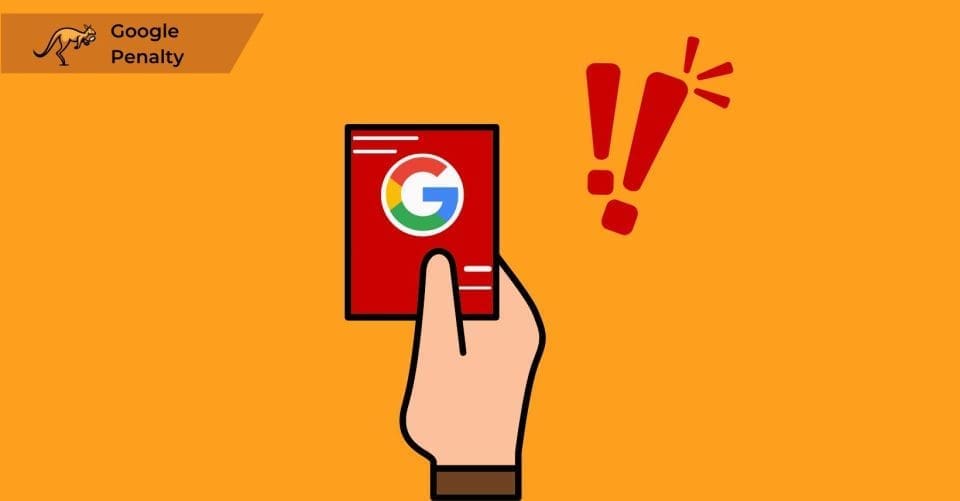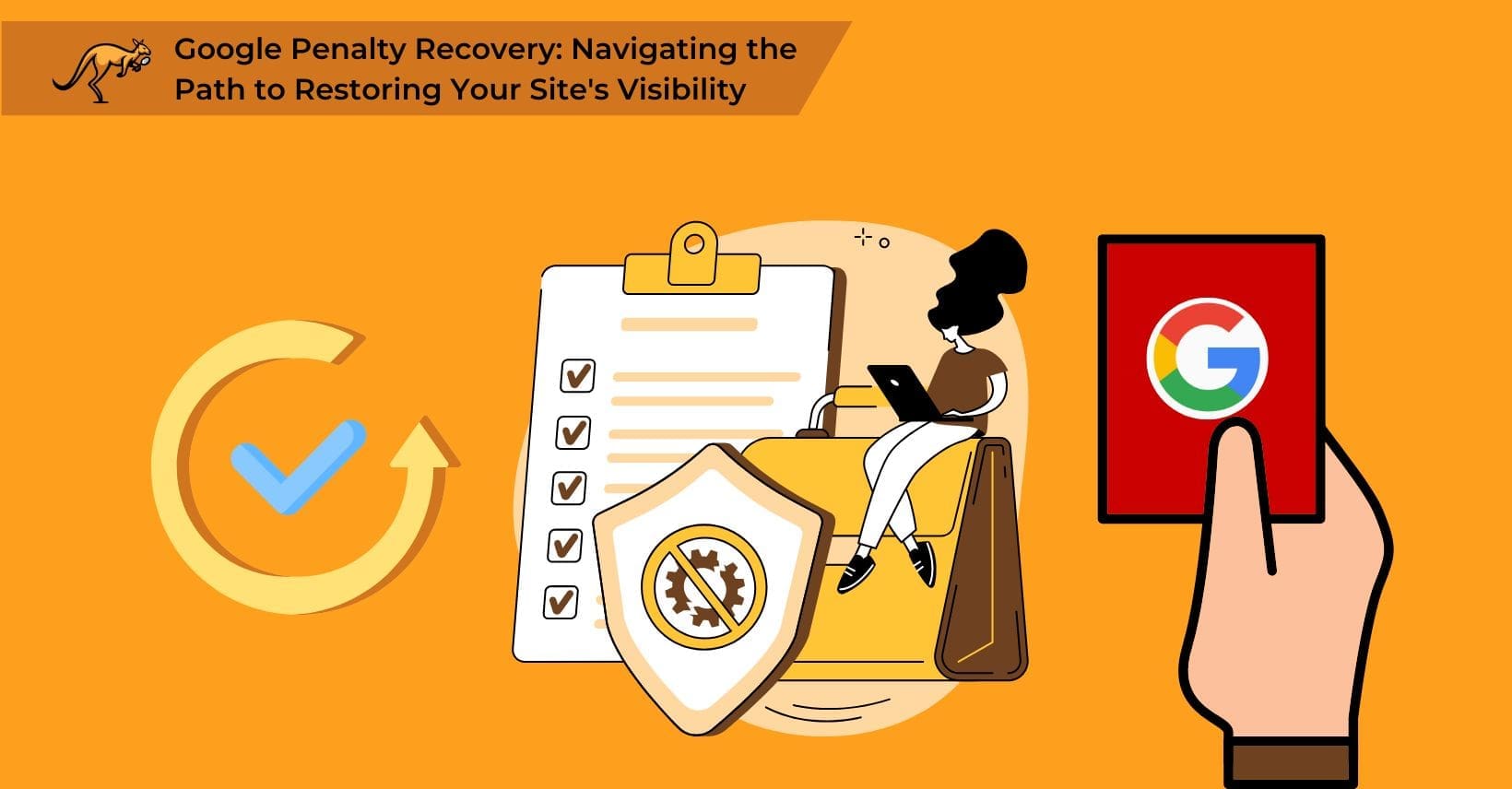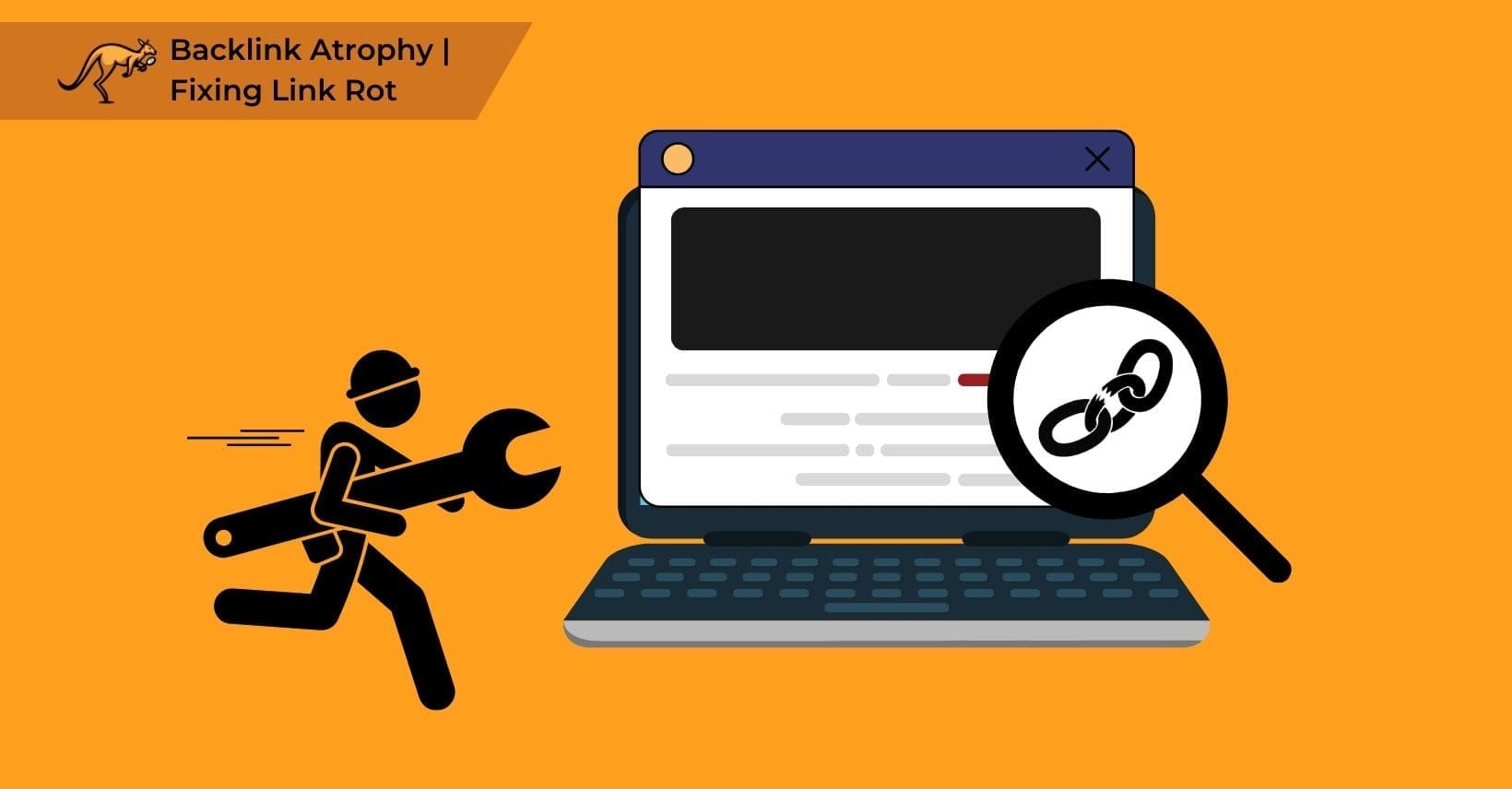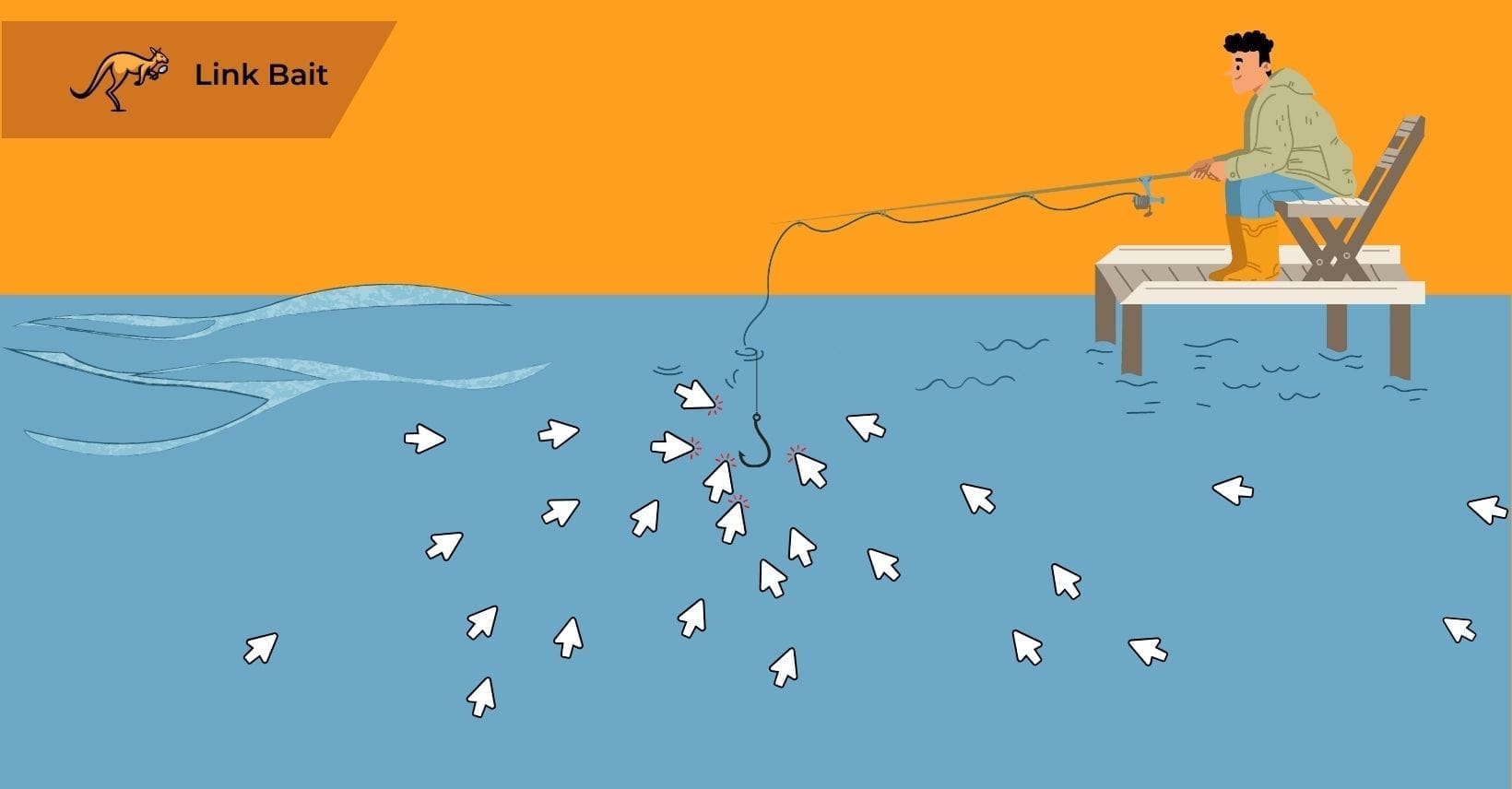Receiving a Google penalty can be devastating, significantly impacting your site’s traffic and search engine rankings. However, recovery is possible through diligent effort and strategic actions.
This guide will explore common penalties issued by Google, including both algorithmic and manual sanctions, and provide actionable steps for resolving these issues to regain lost rankings.
As we delve into the mechanisms behind these penalties, we’ll begin by defining what a Google penalty is, setting the stage for a deeper understanding of how they affect your site and how to respond effectively.
What Is A Google Penalty?

A Google Penalty is assigned when a website violates Google’s marketing practices, which causes a dramatic loss of search rankings and organic traffic. Google penalties come in two forms: algorithmic penalties that are automatically applied through algorithm updates and manual penalties that are issued by Google’s review team after identifying black hat SEO tactics.
While algorithm changes implement computations and rules to reward high-quality websites according to Google’s webmaster guidelines, manual reviews focus on sites that may only partially meet these standards.
Misinterpreting these algorithm updates as penalties is common among SEO newcomers. However, the impact of actual penalties and perceived ones through updates can similarly disrupt your site’s organic traffic significantly.
This connection between penalties and quality standards leads us to explore why Google penalties occur, shedding light on the mechanisms that trigger such drastic actions.
Why Do Google Penalties Happen?
Google’s ongoing updates to its search engine aim to enhance user experiences by delivering precise answers to search queries. As Google became integral to digital marketing, businesses recognized the advantages of ranking on the first page and began employing various strategies to boost their visibility.
While many of these strategies are legitimate or “White Hat,” others fall under the unethical “Black Hat” SEO practices. Google causes penalties by refining its algorithms to identify sites that violate its quality guidelines, applying sanctions for practices that range from unintentional errors by website owners to deliberate black hat tactics such as keyword stuffing, link schemes, cloaking, hidden text, and duplicate content.
While daunting for any site owner, these penalties highlight the importance of adhering to Google’s standards—a critical segue into understanding the different types of Google Penalty that can affect your site’s ranking.
The Two Types of Google Penalty
There are two different types of penalty that can strike your web pages. These are the algorithmic penalty and the dreaded manual Google penalty.
In order to manage your Google penalty recovery, you will need to know which of these two types of site-wide penalties you are dealing with.
Let’s take a look at both algorithmic penalties and manual penalties to help you understand the vital difference between them.
Algorithmic Penalties
The Google algorithm is a complex process in which Google pulls resources from the web, stores them, and then returns the best possible result for a query.
To rank websites, the Google search algorithm is thought to consider around 200 different ranking factors.
When a website violates the Google algorithm’s disciplinary rules, the website receives an algorithm penalty. Furthermore, web page ranking on SERP is determined by Google’s algorithms.
Unfortunately, algorithm penalties are difficult to identify since site owners are not notified, and the fundamental cause is difficult to pinpoint. Google spiders or crawlers crawl a site and punish it without warning if any information violates Google’s webmaster guidelines.
On top of this, Google algorithm updates may result in an algorithmic penalty. The two most recent major updates that applied penalties were known as Google Panda and Google Penguin.
A Panda penalty and a Penguin penalty may sound cute and friendly, but they can absolutely devastate your Google ranking in search engine results.
Recovering from an algorithmic penalty requires analyzing your site’s performance drop against recent algorithm updates, identifying which aspects of your site violate Google’s quality guidelines, and systematically addressing those issues through content improvements or backlink cleanup without the option to submit a reconsideration request.
Manual Penalties
Google issues manual penalties through its spam team, which assesses whether sites violate Webmaster standards.
When a site fails to comply, a Google employee reviews its activities and may apply a penalty, significantly dropping its search rankings or removing it from search results entirely.
Manual penalties are challenging, often requiring page-specific corrections and a formal reconsideration request submitted via Google Search Console. Recovering from a manual penalty requires identifying the specific violation noted in Search Console, fixing all instances of the issue across your site, documenting your remediation efforts, and submitting a detailed reconsideration request that acknowledges the problem and outlines the steps taken to resolve it.
Recognizing the severity of manual penalties highlights the importance of understanding their causes, leading directly into the discussion of why Google might penalize a site.
Why Have I Been Penalized by Google?
There are several different reasons why your site’s rankings might have tanked, from a simple algorithm update to an overreliance on poorly written content. Here are the most common reasons why websites are hit by Google penalties.
Unnatural Links
Backlinks are used by Google to assess the quality of your website and its content. If Google detects that a link appears to be paid link building or part of link schemes like a private blog network, you are in big trouble.
Link quality is a vital metric used by Google: it wants to see high-quality links.
In such circumstances, Google may not count the linking value at all and may even penalize you. If the problem is localized, this penalty will usually be applied to certain pages. It only sometimes imposes a site-wide penalty.
Poor Quality Content
Google strives to provide the greatest possible experience for its users. You should expect a Google penalty if your material is low quality and does not provide the users with any value.
Poor content includes plagiarized or otherwise duplicated material, spammy content, doorway pages, keyword stuffing to hit targeted keywords, or other thin content with poor value.
This penalty has the potential to significantly reduce your search traffic. Google displays a manual action for this penalty with the statement, “Thin content with little or no added value.”
In some circumstances, using duplicate content may be unavoidable or even required. For example, if you write an article that incorporates music quotations or lyrics, you will have duplicate content.
You can use canonical tags to show Google that you recognize the duplicate content and are behaving in good faith. This might draw their attention to a certain piece of material.
In the case of keyword stuffing or other thin content, the Google penalty comes from the (almost certainly correct) conclusion that you are trying to manipulate a search engines algorithm rather than provide valuable pages for organic traffic.
Panda Penalties
This penalty is intended to assess the quality of information published by a website. What is remarkable about this penalty is that it impacts your whole site, even if you only have problems with one portion of it.
While the Panda patent is quite technical and uninteresting, it does explain how it works.
It is quality-based and seeks to eliminate redundant, shallow links, brand searches, and badly written material. When a specific site fails to match the requirements, Google assigns the modification score to the entire site.
As a result, even if you have a few low-quality pages, they may have an impact on your entire site, sending search traffic plummeting across your site.
Penguin Penalties
The Penguin penalty is mostly concerned with backlinks and unnatural link patterns. Unlike the Panda algorithm update, the Penguin algorithm update only impacts certain pages. Recovering from a Penguin penalty requires conducting a comprehensive backlink audit, removing or disavowing toxic links, and rebuilding your link profile with high-quality, relevant backlinks from authoritative sources.
If you are struck by this Google penalty, you must recover solely for certain pages. All of your other pages will continue to be rated and gain organic traffic.
It is regarded as unnatural if the majority of your backlinks come from your comments area.
Similarly, if several links have the same anchor text, this is a bad sign that you might be engaging in shady link-farming behavior to manipulate search engines.
Most websites accumulate a combination of high-quality and low-quality backlinks over time. Google’s algorithms are designed to detect unusually rapid increases in link quantity and poor-quality links, which are signs of manipulative link-building practices.
Recognizing these issues is the first step in addressing them, leading us to explore effective strategies for penalty recovery. This discussion sets the stage for a deeper dive into how to recover from a Google penalty systematically.
How to Recover from a Google Penalty

Google penalty recovery is a tricky and time-consuming process, but it is not impossible.
We are going to walk you through the best Google penalty recovery process out there, but you should be aware that even if you follow this guide to the letter, and even if the problems are due to an honest mistake, Google penalties can stick around for a while, and it might take some time for you to see your rankings in the search engines rising again.
As a result, it is important to get started on Google penalty recovery as soon as you think you have been struck with Google penalties.
The Google penalty recovery process typically takes between 2-6 months depending on the severity and type of penalty, with manual penalties often requiring more time than algorithmic ones. Recovery timelines are influenced by how quickly you identify the issue, implement necessary changes, and receive Google’s response to your reconsideration request.
Step 1: Find Out What Sort of Google Penalty You Have Been Given
Before you can do anything, you must first identify which type of Google penalty affects your site. Fortunately, Google webmaster tools like Google Search Console can help you determine this by checking for manual action notices, while sudden traffic drops coinciding with known algorithm updates suggest algorithmic penalties, and analyzing your backlink profile can reveal Penguin-related issues.
Hunting around in the dark and hoping to stumble on the right fix without knowing what the problem is will not get you anywhere.
First, go to your Google Analytics dashboard and make sure your analytics tracking code is correctly installed. To ensure that everything is in order, use the Google Analytics Debugger addon to get a detailed report.
Check Google Search Console to determine whether your website has been manually penalized.
Select Security & Manual Actions, followed by Manual Actions. Look for any error messages now. If there is a manual action causing you problems, it will be displayed here.
Have you determined that the issue is caused by a manual action? Get in touch with a professional SEO agency to handle it.
As mentioned previously, penalties from manual actions can be very difficult to fix, so if you see that penalty warning in the Google Search Console, abandon the rest of this guide and call in professional help immediately. A technical SEO audit agency will be able to help here.
If it is not a manual action that is the root cause of your problems, then something must have changed on your site recently.
Most sites that are not hit by a manual action are suffering from a bit of new content that reads like it is full of spam links or something new in your backlink profile that looks a bit sketchy to Google’s algorithms.
Step 2: Check for Recent Google Algorithm Updates
Google’s algorithm is updated on a regular basis.
A change in the algorithm might be to blame for a decrease in traffic and site performance.
In some situations, the update will result in a penalty. That is why it is critical to monitor Google algorithm changes and take action as required.
Moz has a fantastic website that lists every Google update as it happens, which is one of the most useful resources out there to help you stay on top of any Google algorithm update that might affect your site.
Examine its page to check whether any of the reported modifications correspond to when your website’s performance fell. Investigate the update’s target audience and make the necessary modifications to your website.
There have been several tools developed over the years to assist you in determining which upgrades have the most impact on your site and why.
Step 3: Fix Up Your Backlink Profile
Cleaning up your link profile is crucial to recover from a Google penalty. Start by using Google Search Console to list all domains linked to your site, then enhance this data with tools like Moz Open Site Explorer to ensure comprehensive coverage. The backlink cleanup process involves categorizing links as good or toxic, prioritizing removal of spammy links from low-authority domains, contacting webmasters with removal requests, and finally using Google’s disavow tool for links that cannot be manually removed.
From this aggregated list, identify and remove or disavow spammy and low-quality links that harm your SEO. While reaching out to web admins may yield some removals, often the final recourse is using Google’s disavow tool to ask Google to ignore harmful links.
For ongoing management, consider tools like Monitor Backlinks, which consolidate these steps into a streamlined process.
Several tools assist with Google penalty recovery, including Google Search Console for identifying manual actions, SEMrush and Ahrefs for backlink analysis and competitor research, Moz for tracking algorithm updates, and specialized recovery tools like Cognitive SEO and Link Detox that help identify and remove harmful links.
This systematic approach to restoring your site’s health sets the stage for our conclusion, where we’ll summarize the key strategies for mitigating the impact of Google penalties and safeguarding your website’s future.
Conclusion: Restoring and Protecting Your Site’s SEO Health
In the ever-evolving landscape of search engine optimization, navigating Google penalties is a critical skill that every webmaster should master. This guide has walked you through the essential steps for identifying and recovering from Google penalties, whether they arise from algorithmic changes or manual sanctions imposed by Google’s review teams. We’ve explored the types of penalties you might face, from link-based issues to content quality problems, and provided actionable strategies for auditing and correcting your site to regain good standing in search results.
As we conclude, remember that recovery from a Google penalty requires a combination of thorough investigation, strategic action, and ongoing vigilance. Keeping abreast of Google’s updates and maintaining high standards for your website’s content and backlink profile will not only help you avoid penalties in the future but also bolster your site’s overall SEO health. With diligent application of the practices outlined, you can turn a penalty recovery process into a strong SEO strategy that enhances your site’s visibility and ranking sustainability.




